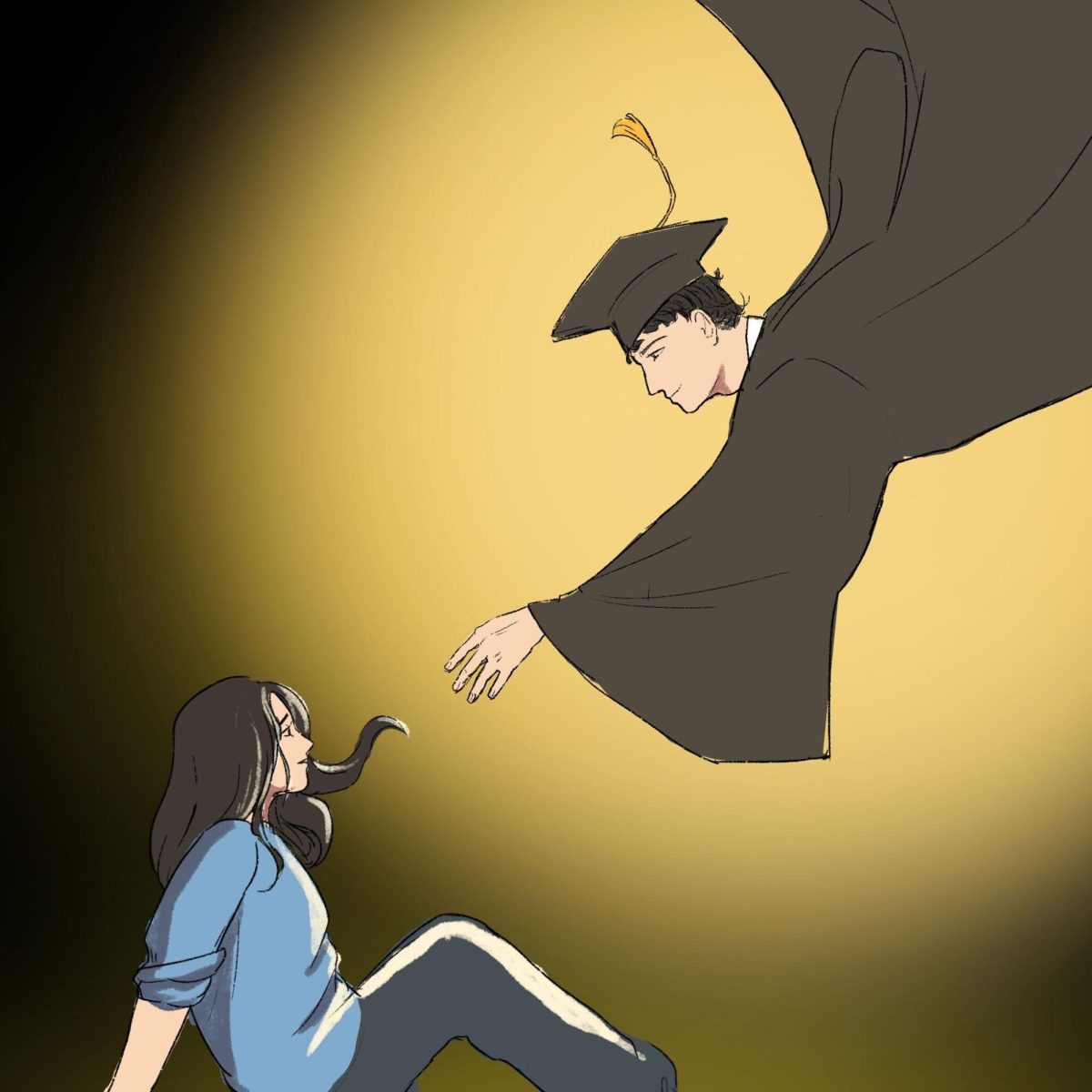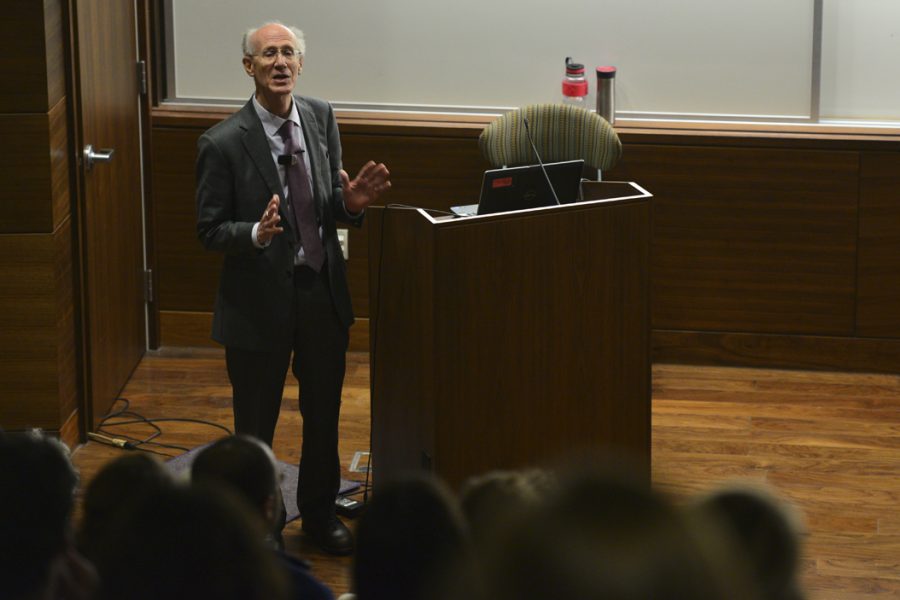Peter Salk knows the last step to eradicating polio: teamwork.
His father, Jonas Salk, the inventor of the injected polio vaccine, began imagining an institute dedicated to investigating experimental medicine in 1954, two years after the creation of the first
polio vaccine in 1952. Jonas founded the Jonas Salk Institute for Biological Studies in California in 1960.
But according to the younger Salk, his father knew more than research would be necessary to eradicate the virus.
“Cooperation brings us results. But he knew we have to deal with the issues that arise from man’s relationship to man,” Salk said.
Salk spoke to 150 students, medical professionals and Pittsburghers about achieving polio eradication as part of the series “Food for Thought,” a talk the University of Pittsburgh’s Graduate School of Public Health sponsored Wednesday evening.
According to Caitlin McCullough, events coordinator for Student Affairs, the series provides real-life application of theories that students in Pitt’s medical school learn in class by providing historical context to relevant issues of public health.
“The eradication of polio is still a goal of ours as a society and planet,” McCullough said. “Although it’s not as prevalent, the plight of one disease is relevant no matter what.”
During the event, Salk presented the plight and prevalence of poliovirus, ending with the challenges that keep eradication a goal, rather than a reality, such as lack of education and cultural barriers.
“We’ve muddled through using two imperfect vaccines in harmony to reach near eradication,” Salk said. “What’s missing now is the political, religious, cultural dimension that will allow us to accomplish eradication in a smooth fashion.”
Cindy Bryce, associate dean of Student Affairs, said Peter Salk spoke as a visiting professor in the department of infectious diseases and microbiology at Pitt. Salk currently works in San Diego as president of the Jonas Salk Legacy Foundation.
“We wanted to bring him back to talk about disease that is still important, which we take for granted as cured but isn’t,” Bryce said.
People’s desire to eradicate lost momentum the year the vaccine came into use after the Cutter Incident, in which more than 200,000 US children received a incompletely inactivated polio vaccine. The injected polio vaccine is produced from naturally occurring poliovirus strains killed by formalin, a mixture of formaldehyde and water. Two hundred children were paralyzed in varying degrees.
Pushback continued into the turn of the century and spread globally to areas opposed to Westernization and medical intervention.
The consequences of denying vaccines to certain populations are widespread. One fifth of the world’s polio cases in 2016 occurred in the Shigal District of Afghanistan, which has a population of 1,000 people. According to Salk, from these unvaccinated areas, the virus spread through sewage to Israel.
“We are dealing with a world that has a great deal of complexity and misunderstanding [of vaccines],” Salk said.
According to the Center for Disease Control and Prevention, polio was eradicated in the United States in 1979. As of the end of last year, only 35 cases remain worldwide.
Margaret Matthews, an epidemiology graduate student in the school of public health who grew up in Rochester, New York, and received her undergraduate degree from Mercyhurst University in Erie, Pennsylvania, wasn’t born the last time polio was prevalent in the United States.
“I didn’t realize the polio virus research started in Pittsburgh or that first trials happened here,” Matthews said at the lecture. “It makes it really relatable.”
According to Salk, eradicating polio requires transition from the oral vaccine back to the injected vaccine, which has 99 percent effectiveness after three doses. Albert Sabin created the oral polio vaccine in 1961. The treatment contains weakened poliovirus, not the inactivated virus like the injectable vaccine.
Beyond transitioning from the viral makeup of the vaccine is the transition in medical technology. At the end of the lecture, Peter Salk introduced a less painful patch of microneedles that replace the need for a vile of vaccination and syringe.
“This new medical technology contains the vaccine in a solid form, which is left on for a few minutes and dissolves into the skin,” Salk said.
Bryce said having Peter Salk talk at the University about his first-hand experience with the disease — from witnessing the invention of the vaccine to the research he is doing now — was a rare and insightful experience.
“We learn about this from textbooks and he tells us as part of his life,” Bryce said. “Students are better able to understand and appreciate history when they can put faces to names.”



